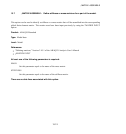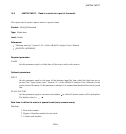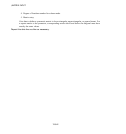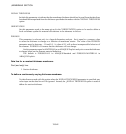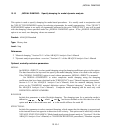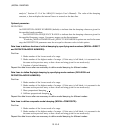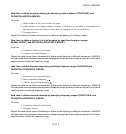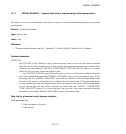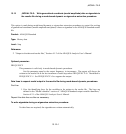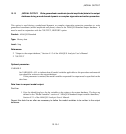
*
MODAL DAMPING
analysis,” Section 6.3.11 of the ABAQUS Analysis User’s M anual). The value of the damping
constant, s, that multiplies the inte rnal forces is entered on the data line.
Optional parameter:
DEFINITION
Set DEFINITION=MODE NUMBERS (default) to indicate that the damping values are given f or
thespecifiedmodenumbers.
Set DEFINITION=FREQUENCY RANGE to indicate that the damping values are given for
the specified frequency ranges. Frequency ranges can be discontinuous.
If both the
*
MODAL DAMPING and
*
SELECT EIGENMODES options are used in the same
step, the DEFINITION parameter must be set equal to the same value in both options.
Data lines to define a fraction of critical damping by specifying mode numbers (MODAL=DIRECT
and DEFINITION=MODE NUMBE RS):
First line:
1. Mode number of the lowest mode of a range.
2. Mode number of the h ighest mode of a range. (If this entry is left blank, it is assumed to be
the same as the previous entry so that values are being given for one mode only.)
3. Fraction of critical damping,
.
Repeat this data line as often as necessary to define modal damping for different modes.
Data lines to define Rayleigh damping by specifying mode numbers (RAYLEIGH and
DEFINITION=MODE NUMBERS):
First line:
1. Mode number of the lowest mode of a range.
2. Mode number of the h ighest mode of a range. (If this entry is left blank, it is assumed to be
the same as the previous entry so that values are being given for one mode only.)
3. Mass proportional dam ping,
.
4. Stiffness proportional da mping,
.
Repeat this data line as often as necessary to define modal damping for different modes.
Data lines to define composite modal damping (MODAL=COMPOSITE):
First line:
1. Mode number of the lowest mode of a range.
2. Mode number of the h ighest mode of a range. (If this entry is left blank, it is assumed to be
the same as the previous entry so that values are being given for one mode only.)
Repeat this data line as often as necessary to define modal damping for different modes.
13.10–2
ABAQUS Version 6.1 Module:
ID:
Printed on:




